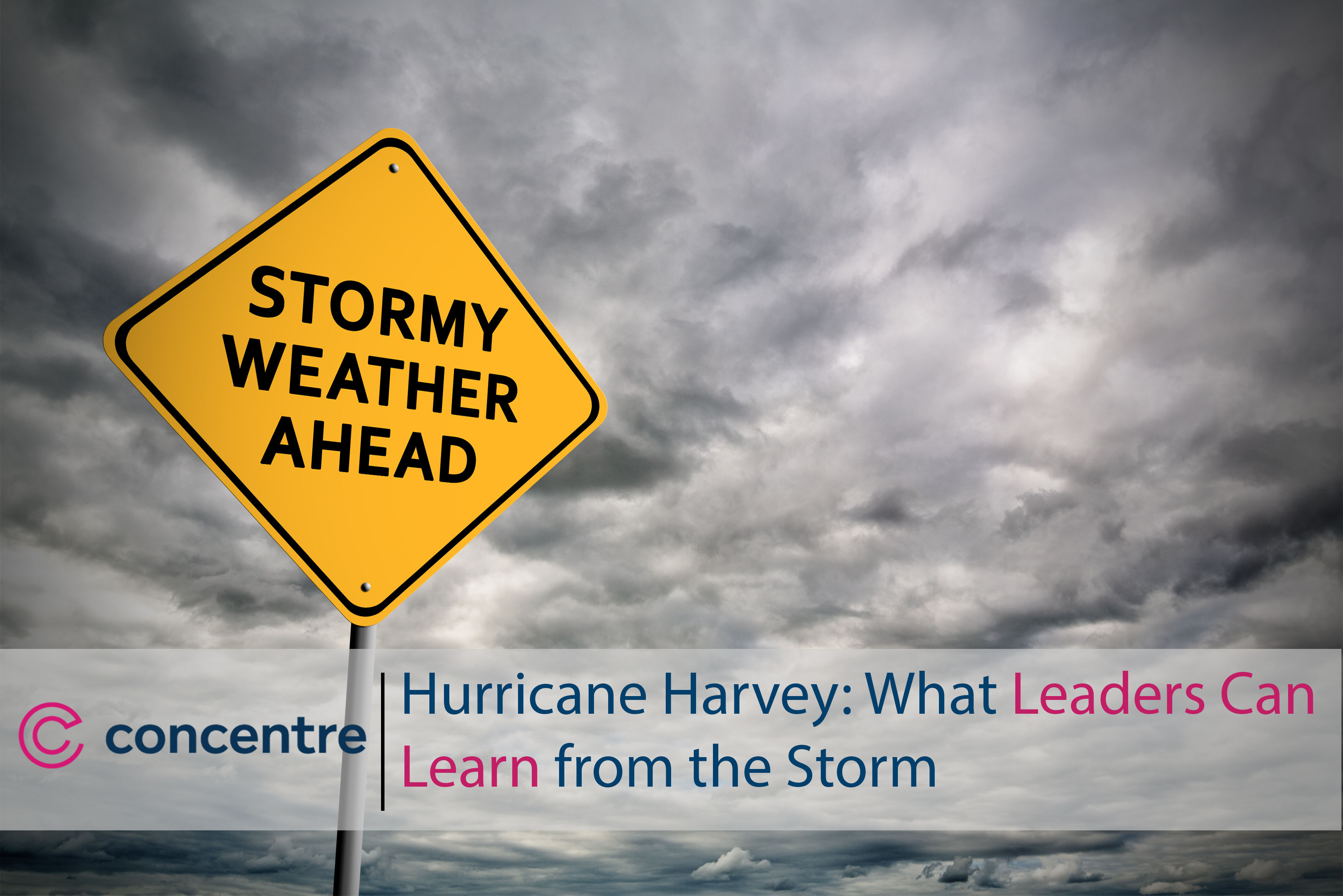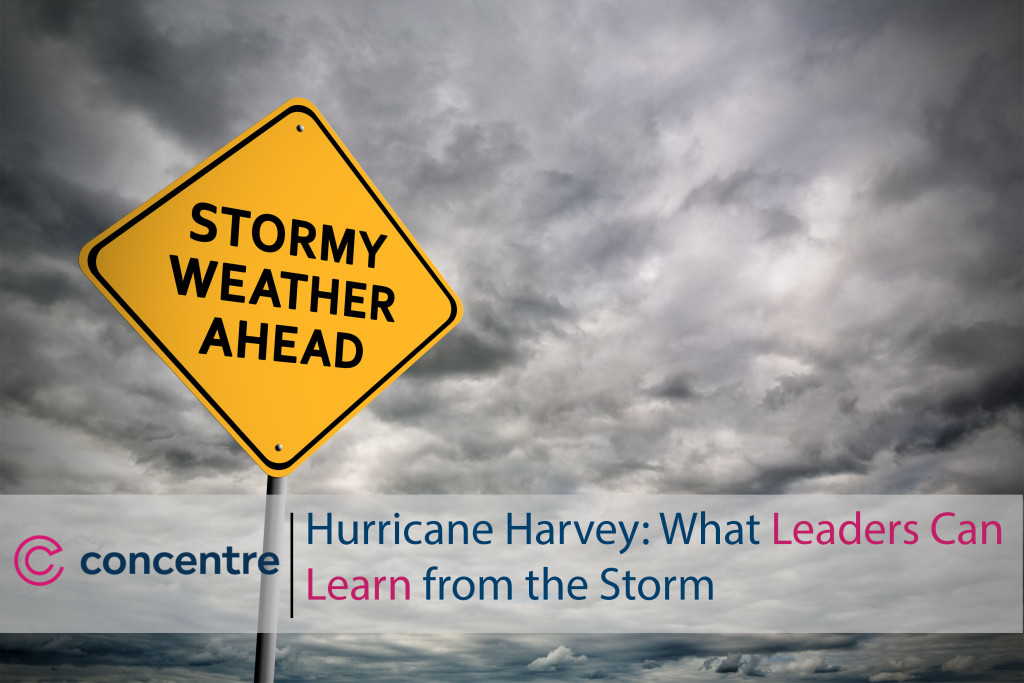The most predictable thing about hurricanes is that they will happen. Inevitably, one of those harmless clouds out in the ocean will grow from tiny speck into a massive storm that wreaks havoc on whatever communities are unfortunate enough to stand in its way.
In the wake of Hurricane Harvey, the media has been flooded with stories of heroism, images of heartbreaking loss, and endless opinions about what could have been done to better prepare for and navigate the disaster.
Rather than point fingers and judge from afar, leaders can (and should) instead look at Hurricane Harvey as a study in leadership in times of crisis. Below are some of our observations:
Prepare, prepare, prepare.
Storms will happen, and you can’t stop them. The only thing you can control is how prepared you are when they come. It’s critical for leaders to have plans in place for when disaster strikes. Prepare, prepare, prepare. And then, when you think you’re finally prepared, prepare some more. Crises should not surprise you. Think through as many scenarios as possible, imagine the potential fallout, and anticipate how those who look to you for direction will react. Most important, think about what your people need to be successful, and make sure you can provide it.
Plan for bad times during good times.
If you wait to prepare until the storm has already materialized, it’s too late. Leaders in Southeast Texas didn’t wait until Hurricane Harvey was headed their way—or even until the unnamed tropical depression originally formed. Instead, communities in coastal areas do their best to plan and prepare when the weather is calm. As a leader, it’s your responsibility to anticipate what storms may be ahead. Never assume clear skies will last forever.
Make rules, but know when to change them.
Policies and procedures are essential for success. Just realize that they can both help and hurt. There are countless local ordinances, state laws, and federal regulations governing what happens before, during, and after a natural disaster. Some of these laws provide positive direction during the chaos. But there are others that can actually impede an otherwise agile recovery effort. Leaders must put processes in place to guide their responses—but also recognize the need to trim the fat and streamline efforts when necessary.
Build momentum—and then keep it up.
Embrace the 80% rule to keep things moving. An imperfect decision is better than no decision at all. During a crisis like Hurricane Harvey, decision makers will never have as much information as they would like. Granted, for most leaders, indecision won’t potentially result in large-scale loss of life. However, hesitation or paralysis-by-analysis can significantly hinder or stall their organizations’ direction or momentum. Make the best decision possible with the information at-hand, and don’t be afraid to fine-tune it in real-time as new information becomes available.
While you may not have to manage a crisis on the scale of Hurricane Harvey, you will absolutely be faced with your own storms. You can’t predict what a challenge will look like or when it will hit, but you can definitely look for signs, consider the potential outcomes, and anticipate needs. With some planning and implementation, and you can be prepared for a crisis long before it materializes.
How has your organization successfully planned for crises or navigated a difficult situation? What practices or decisions made the difference? We welcome your comments and perspectives.




